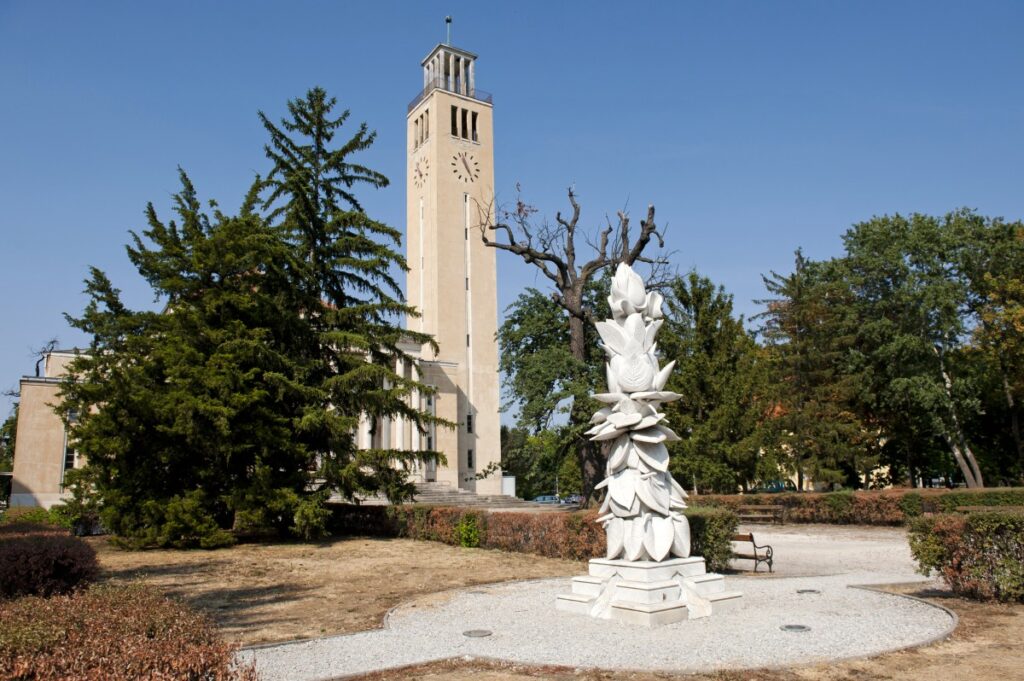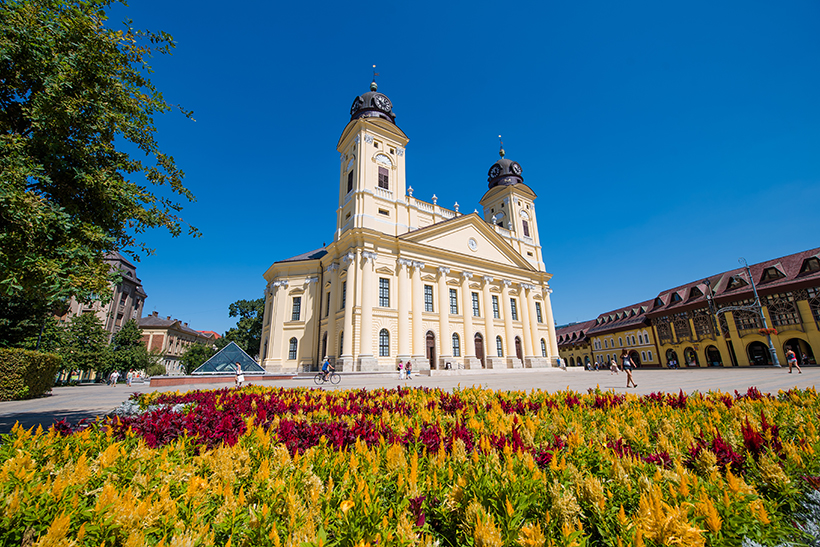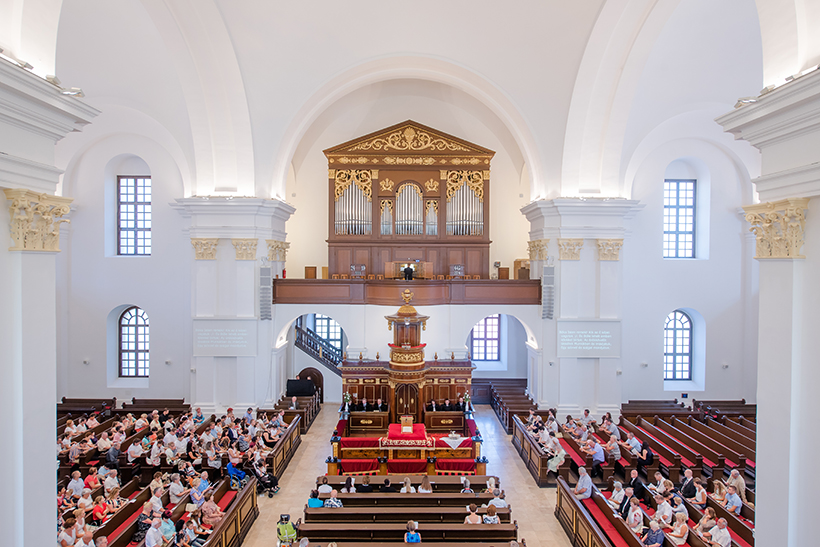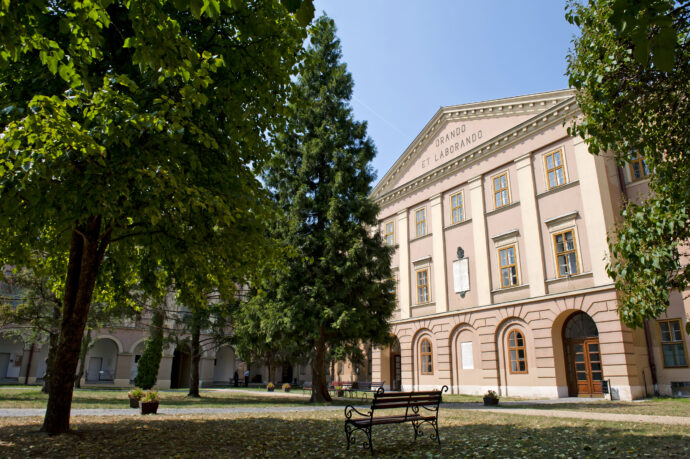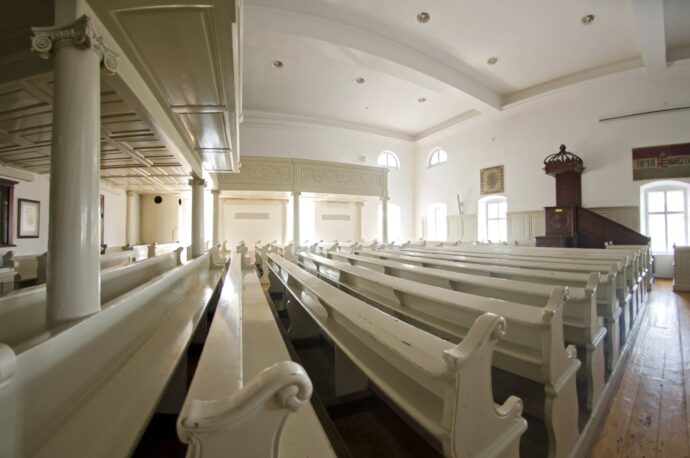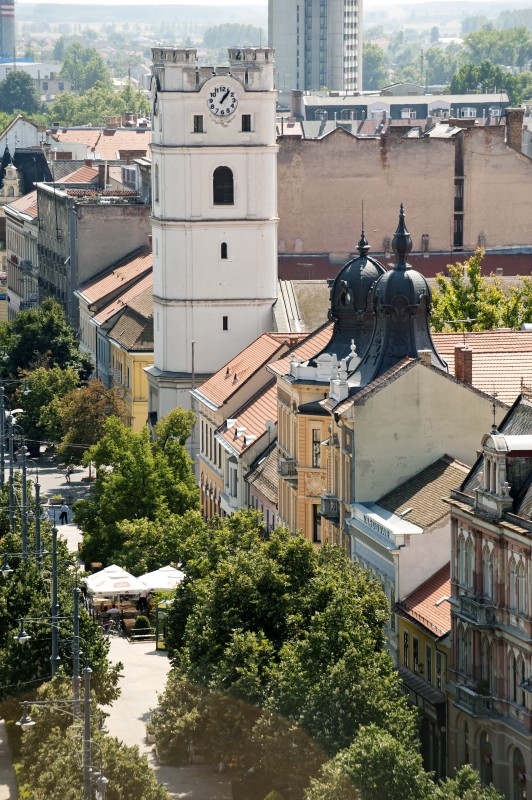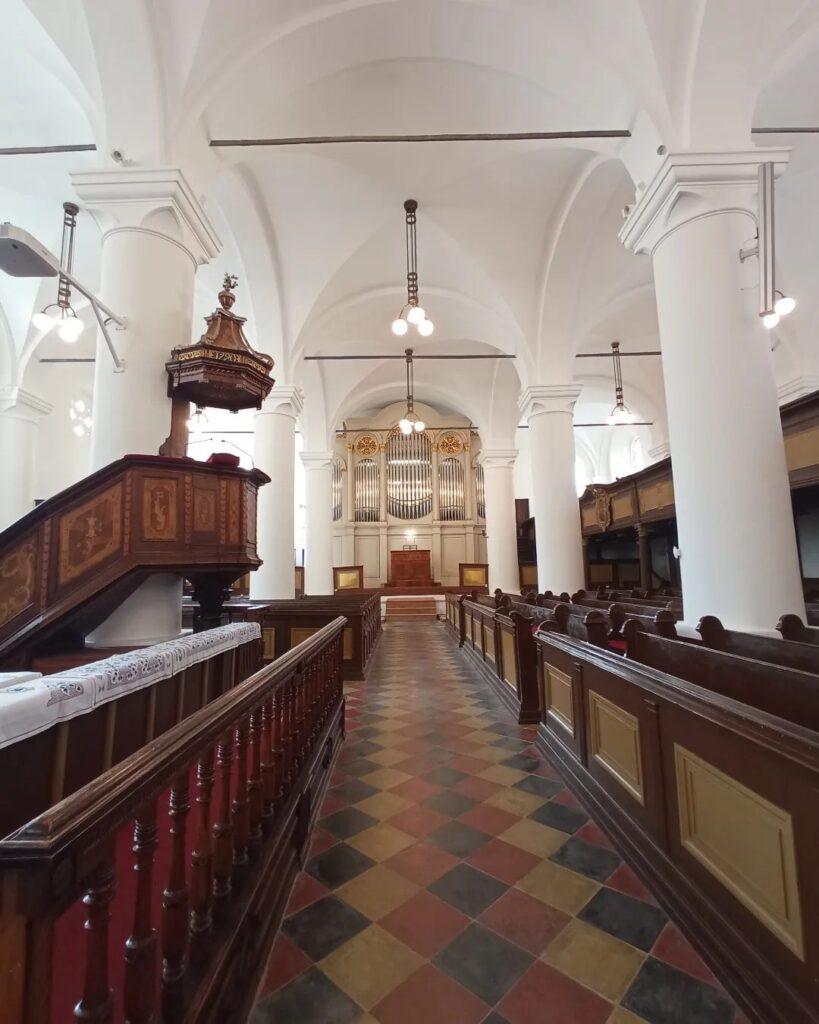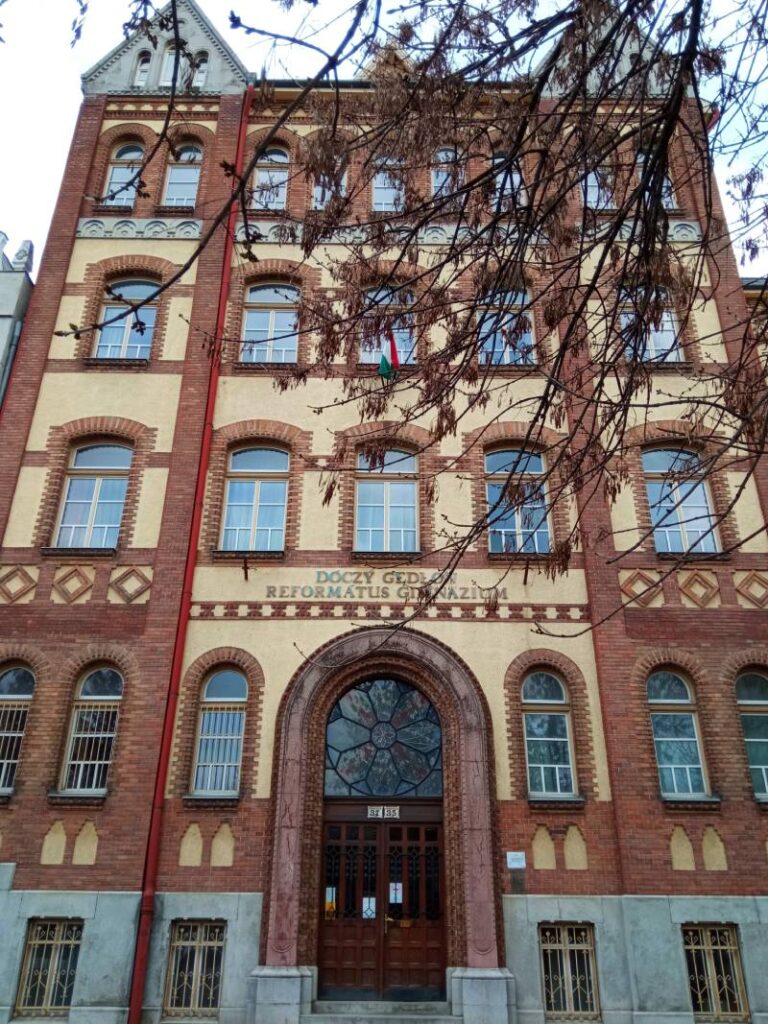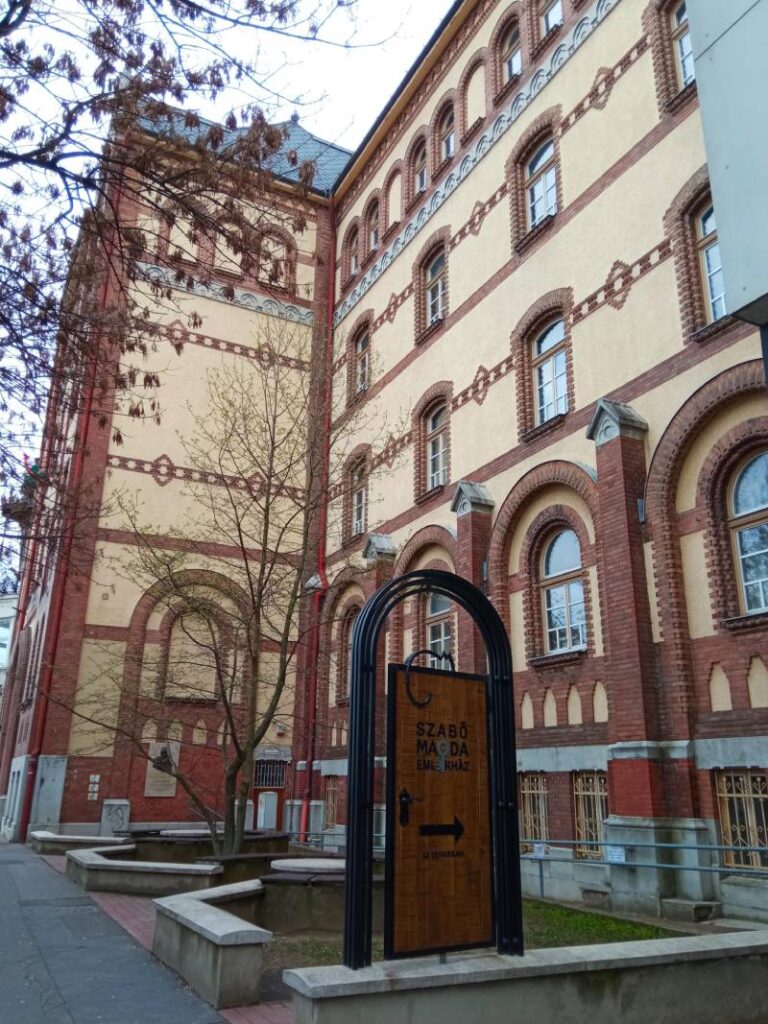Debrecen, the “Calvinist Rome” Failing to explore Debrecen during your visit to Hungary is a heresy like failing to see the Vatican on a Roman holiday. The comparison is absolutely fitting, given that Debrecen is often dubbed the “Calvinist Rome,” thanks to the role it has played in the development of the Reformed faith.
On 31 October 1517, Martin Luther nailed his Ninety-five Theses to the door of All Saints’ Church in Wittenberg that started a series of reforms worldwide in all fields of life. The religious reform movement soon set its foot in Debrecen and the city has become the center of the Hungarian reformation movement.
In 2017 we celebrated the 500th anniversary of reformation and the 450th anniversary of the foundation of the Reformed Church District of the Trans-Tiszanian Region. On the occasion of the memorial year bilingual (Hungarian-English) information boards have been placed on the sites of reformed cultural heritage so visitors can explore the reformed Debrecen along this thematic trail.
REFORMED MEMORIAL SITES IN DEBRECEN
Great Church (Kossuth tér)
The Great Church is one of the symbols of Debrecen and the Hungarian Reformed community. Its present, neoclassical building was built in 1805-1821. Its predecessor, the Gothic St. Andrew Church, served as the venue of the 1657 Debrecen Constitutional Synod that established the Reformed Church. In 2014, the Great Church became an official Site of the Hungarian National Memory, together with the Reformed College. The Declaration of Independence, which proclaimed the dethronement of the Habsburgs, was announced here on 14 April 1849.
Lycium tree (on the corner of Füvészkert Street and Múzeum Street)
This botanical rarity keeps the memory of a legendary theological debate from the Age of Reformation. The tree grew out of a single branch that was stuck into the ground in the heat of the dispute by the Catholic participant, who said, “Your belief will grow into something when this branch turns into a tree!”

City Hall (Piac utca 20)
Since 1531, the city-owned building that houses the public administrative bodies of Debrecen is located at this site. The city council, which comprised the Chief Justice, the jurymen, and the senators, served as Debrecen’s main administrative and jurisdictional organ. After the spread of the Reformation in Debrecen, the city council headed by the Chief Justice supervised from here the religious and moral life of the “Christian Respublica” for three centuries.
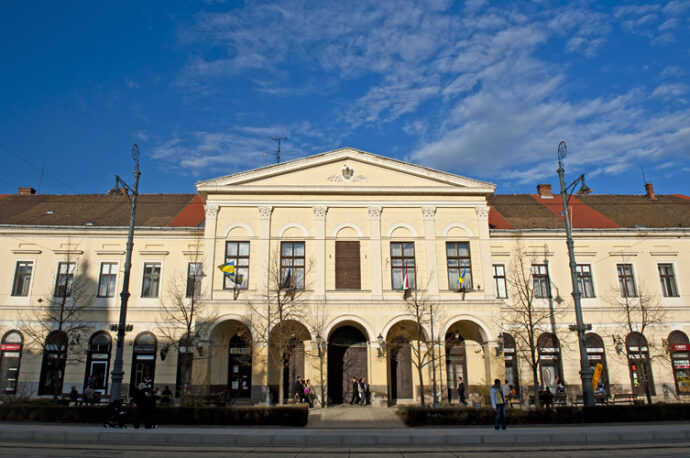
Former Parish House (today: Bishop’s Palace, Hatvan utca 1)
Here stood the former parsonage, where Péter Melius Juhász, the Reformed bishop lived in the middle of the 16th century. The Debrecen Printing House, which functions even today, was set up in the same building by Gál Huszár in 1561. The Bishop’s Palace, which is now a church-owned apartment building, was built in the parsonage’s place in 1912.
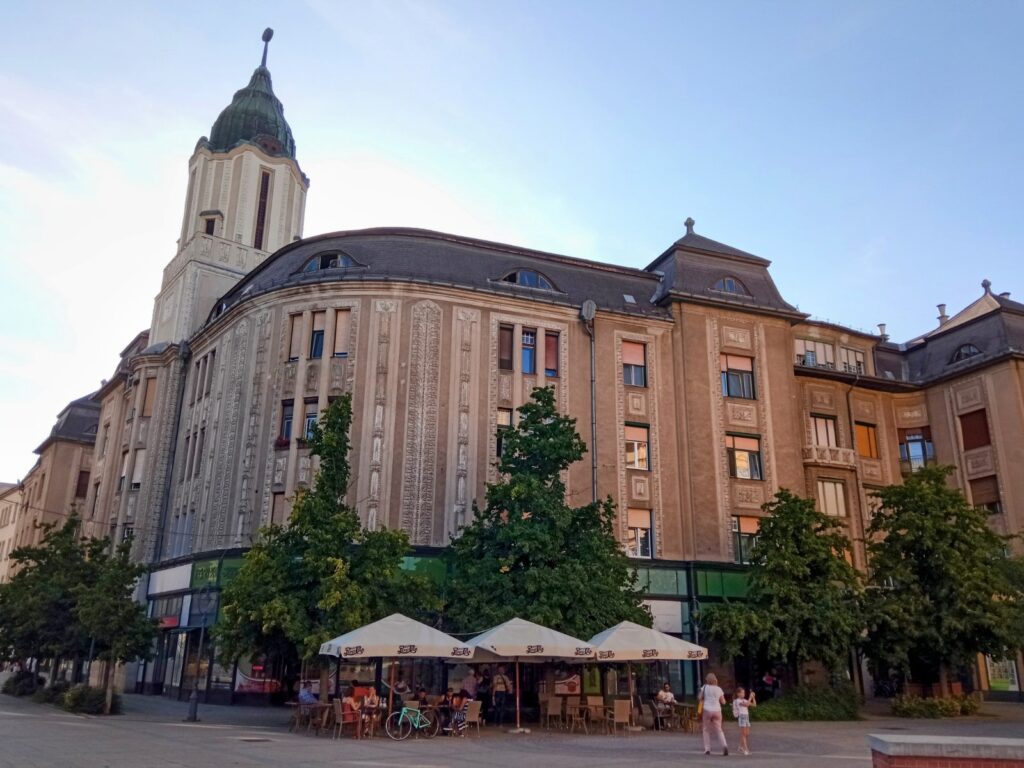
Alföld Printing House (Böszörményi út 6)
The history of Alföld Printing House dates back to 1561, when its predecessor was set up by the reformer Gál Huszár. It had been managed by the city and the Reformed church together for centuries. In the 16th and 17th century, the city’s printing house produced the highest number of publications written in Hungarian, whose majority served the spiritual needs of the Reformed Church. The printing house has functioned since its foundation until today without a break.
Former Consistorial House (today: Bishop’s Office, Kálvin tér 17)
The council dealing with the affairs of the Reformed Church (consistorium/presbytery) began to hold sessions in the former Consistorial House in 1739; it had become a tradition that lasted for the next 150 years. The office of the Bishop of the Transtibiscan Reformed Church District was built in the place of the original house in 1889.
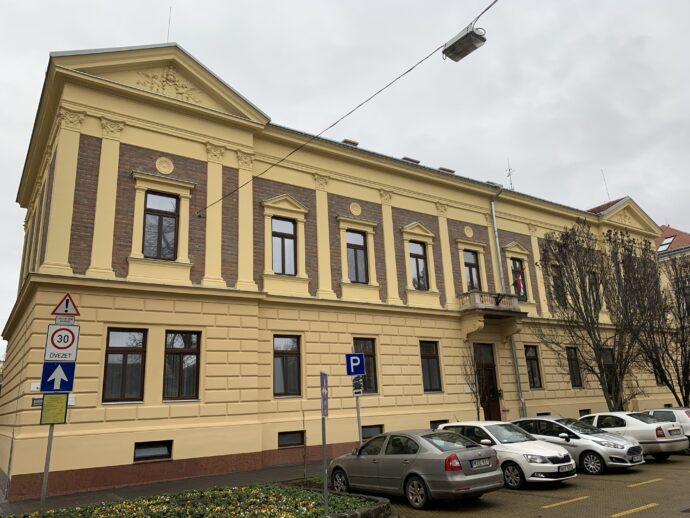
Former Red Tower (Kossuth tér)
The red-brick tower that stood apart from the Great Church was built between 1640 and 1642 for the purpose of holding the 500 kg bell donated to the City of Debrecen by I. György Rákóczi, the Prince of Transylvania. The building was destroyed by the 1802 fire. Today the refounded Rákóczi Bell is kept in the Western tower of the Great Church.
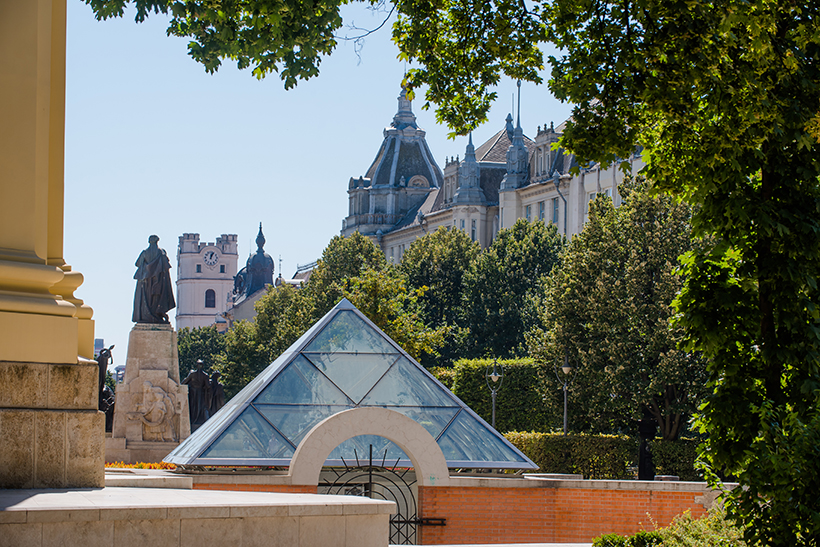
The Galley Slaves’ Memorial Column (Memorial Garden, Kálvin tér)
Erected in 1895, the column commemorates the protestant pastors who were sentenced to galley slavery because of their faith and were freed by Michiel de Ruyter, a Dutch admiral. In the spirit of reconciliation, Pope John Paul II laid flowers at the monument in 1991.
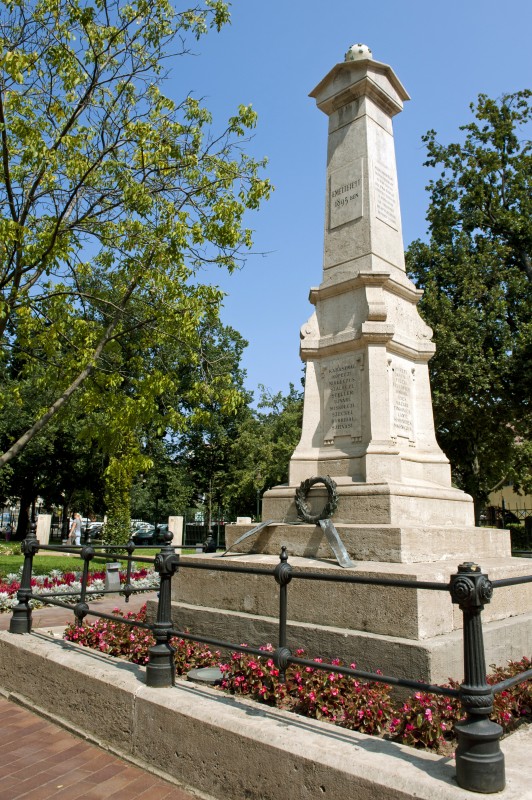
Statue of István Bocskai (Memorial Garden, Kálvin tér)
Erected in 1906, on the 300th anniversary of the Treaty of Vienna that provided religious freedom for Protestants, the statue commemorates István Bocskai, the Prince of Transylvania. Bocskai was a fearless defender of religious freedom and the patron of the Reformed College. He made the hajdu people, who had converted to Calvinism, settle down around Debrecen.
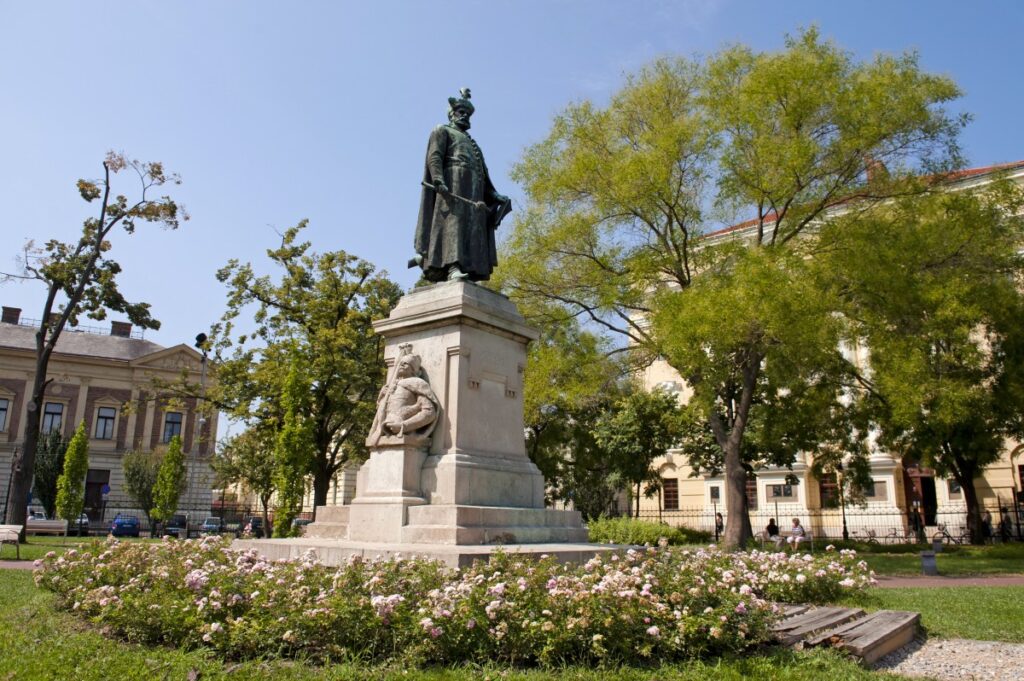
Reformed Memorial (Memorial Garden)
A memorial dedicated to the Reformation was inaugurated in Debrecen, a city often dubbed as the Calvinist Rome in eastern Hungary, on Tuesday to mark the 500th anniversary of Martin Luther publishing his Ninety-Five Theses in Wittenberg. The sculpture depicts St. Andrew Church, the predecessor to the city’s famous Reformed Great Church, and the Lord’s table.
Reformed College of Debrecen (Kálvin tér 16)
Operating without a break since 1538, the institution is a symbol of the strong connection between church, education and public life in Hungary. The College has been the alma mater of numerous outstanding Hungarian thinkers. Today the building houses the Debrecen Reformed Theological University, the Great Library, and two museums. Its present, neoclassical design was created in the 19th century.
Oratory of the Reformed College (Kálvin tér 16)
In 1849, between 9 January and 21 May, the Lower House of the Hungarian National Assembly held sessions in the Oratory. On 13 April, the Assembly adopted the Declaration of Independence that proclaimed the dethronement of the Habsburgs.
Reformed Small Church (Révész tér 2)
The Baroque building of the second Calvinist church in Debrecen was built in 1731. On 11 January 1860, it served as the venue of the church district’s general meeting, which rejected the Imperial Protestant Patent aimed at restricting Protestant autonomy.
Former Infirmary (the area bounded by Raktár utca, Ispotály utca and Salétrom utca)
Here stood the Infirmary, which was founded in the Age of Reformation for the care of the poor, the sick, and the orphans. On 2 June 1944, the whole building complex was destroyed by a bomb, together with the Reformed Infirmary Church.
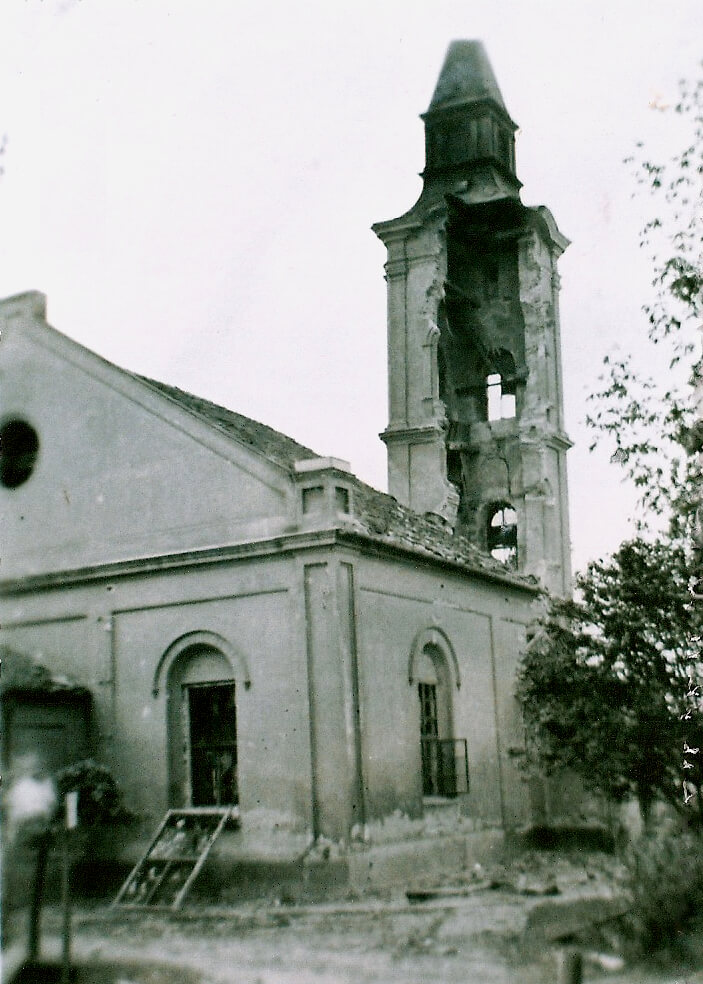
Kossuth Street Reformed Church (Red Church) (Méliusz tér)
Built in 1886, the “Red Church” is famous for the murals representing Biblical and Reformed Church symbols, made by Jenő Haranghy in 1936.

Former Dobozi Cemetery
Situated near the Cegléd Street city gate, this is the area where the location of the old Dobozi cemetery used to be. You could find here the grave of Péter Melius Juhász, the famous reformer and Reformed bishop, along with the thumb stones of other Calvinist pastors and teachers of the Reformed College.
Lutheran Church (Miklós utca 3)
At first, it was the Lutheran branch of the Reformation that appeared in Debrecen, too. Later on, however, the principles of the Helvetian movement became more widespread. The independent Lutheran parish came into existence only at the turn of the 18th century; its church was built in 1889. The building was completely renovated in 2015.
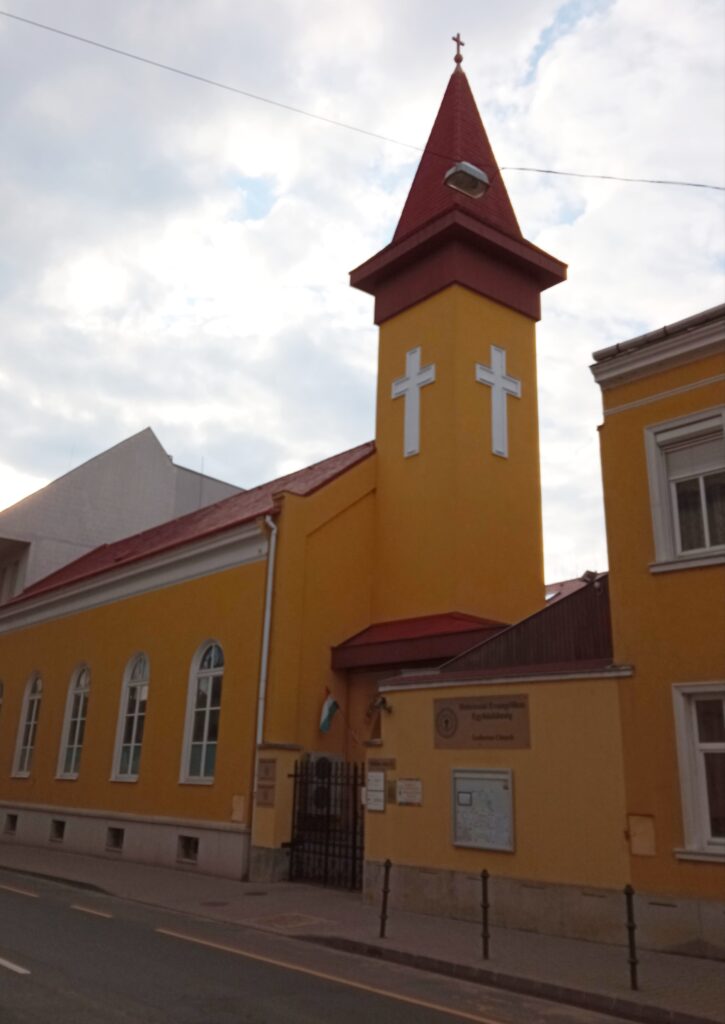
Szabadságtelep Reformed Church (Komáromi Csipkés György tér)
Consecrated in 1935, this is one of the churches that were built in the suburbs of Debrecen in the first half of the 20th century. Many of the surrounding streets were named after important figures of the European and Hungarian Reformation.
Dóczy High School of the Reformed College (Kossuth utca 37)
The Reformed girls’ school was founded in 1838 and later became extended into an educational institution for women, which included a primary school, a secondary school, and a teacher-training college. The institution was confiscated by the state in 1952. Since 2002, a co-educated Reformed high school operates in the Neo-Romanesque building.
Former Reformed Grand Grammar School (today: Primary School and Grammar School of the Reformed College) (Péterfia utca 1-7)
The Neo-Romanesque palace served as the home of the Reformed Grand Grammar School between 1914 and 1972. Since 2014, it houses the Primary School and the Grammar School of the Reformed College. Its first floor corridor is decorated with murals depicting the history of Reformation.
University of Debrecen, Main Building (Egyetem tér 1)
The University was created out of the academic sections the Reformed College, thus it also had a Faculty of Theology between 1914 and 1950. The spiritual legacy of the Reformation is commemorated in the Main Building by the stained-glass windows of the Great Hall and the memorial plaques of the Ceremonial Courtyard.
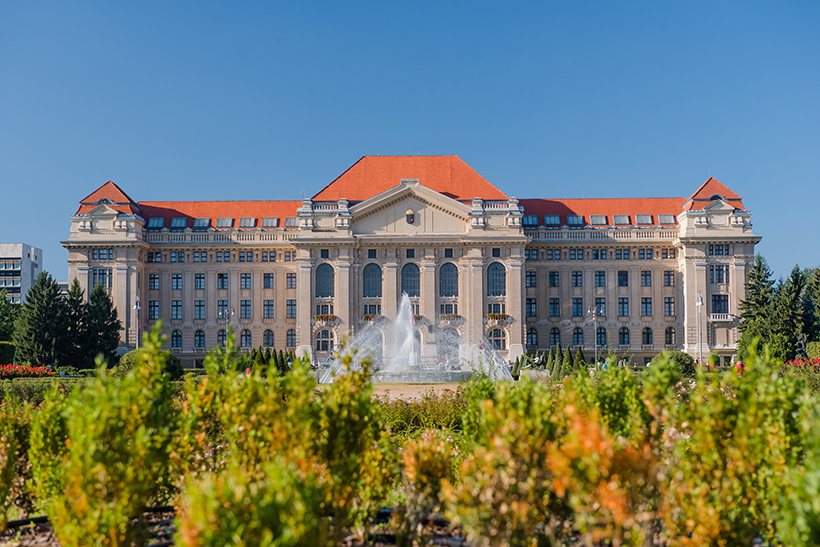
Statues of the reformers at Egyetem tér
The statues of the four Reformed pastors commemorate the Calvinist roots of Debrecen academic life. Péter Juhász Melius was the leading figure of the 1567 Debrecen Constitutional Synod; Gál Huszár set up the first printing house in Debrecen, which functions even today; Albert Molnár Szenczi translated the Genevan Psalter into Hungarian; György Csipkés Komáromi was a Bible translator.
University Church (Egyetem tér 2)
The church was built in 1938-39 to commemorate the 400th anniversary of the Reformed College, on the initiative of Sándor Csikesz, a professor from the Faculty of Theology. The building lost its religious functions in the 1970s, however, today it serves as the home of the Reformed University Congregation.
